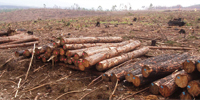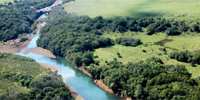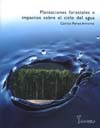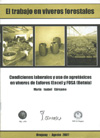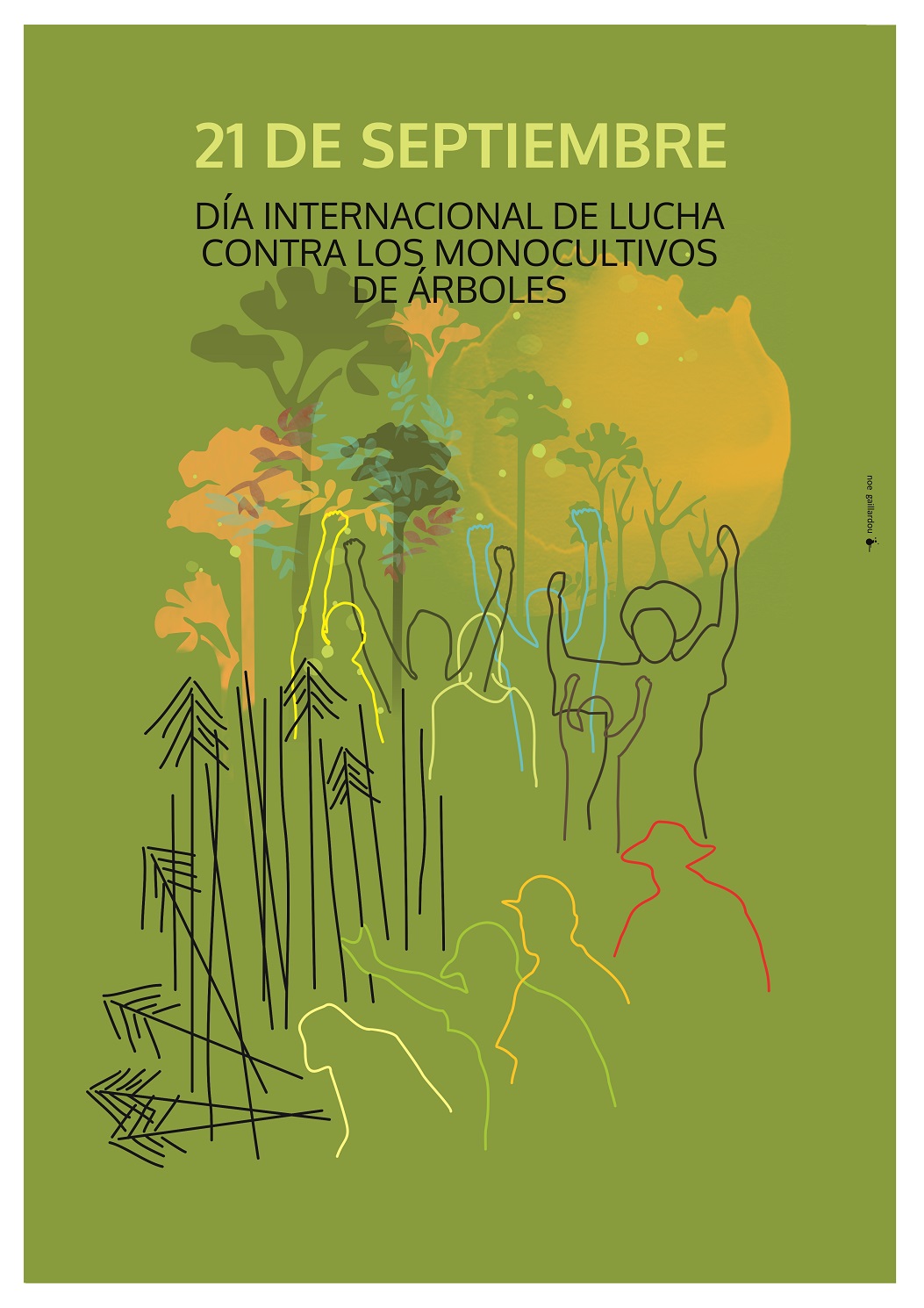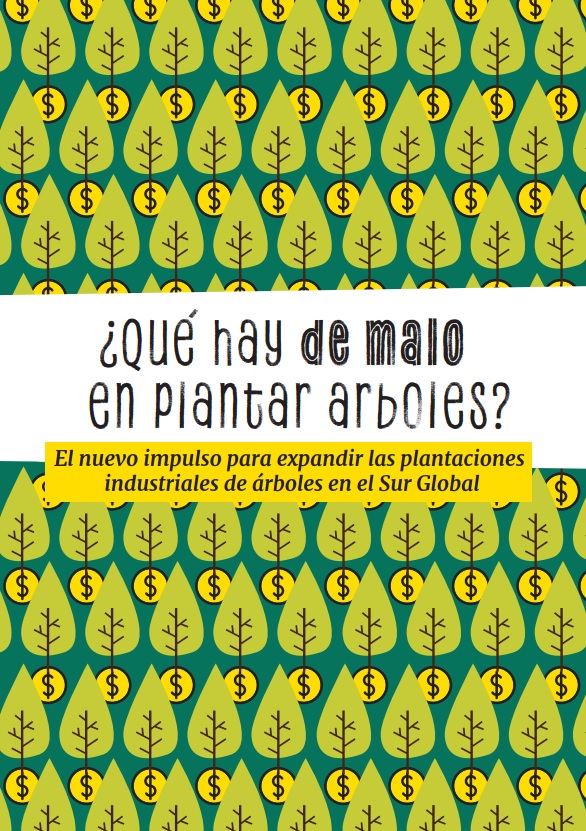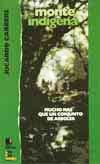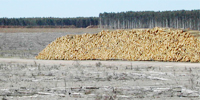Plantation forestry –promoted by the 1987 forestry law and consisting of large-scale monoculture plantations of alien trees– promised an infinite number of benefits to the country: exports, industry, thousands of new jobs. Subsidies, tax exemptions for the import of machinery and industrial equipment, land rates, net worth tax, credits from the World Bank and the Bank of the Republic and the possibility of corporations becoming owners of the land by means of exceptions to the law, were some of the benefits those entrepreneurs received.
“With the experience of having invested in my own property, I recommend you to study these opportunities and to follow my example,” invited the then President of Uruguay, Luis Alberto Lacalle, who had more than one headache over his wheeling and dealing in the forestry issue. Spanish, Finnish, United States and Canadian capitals arrived to install themselves on Uruguayan territory.
In a little over ten years, Uruguay multiplied the number of hectares covered by plantations. The 45,000 hectares existing at the beginning of the nineties today reach over 600,000. According to the Ministry of Agriculture and Fisheries’ 2002 agricultural census, plantation forestry has given permanent work to 2,962 people, although the seasonal nature of the work prevents knowing exactly how many jobs it generates. There is another difficulty; the rate of moonlighting is very high, above all in outsourced work.
Recruited in small villages, in bars, in the cattle ranches where they work as labourers, driven by the need to work and added to the fact that many of them have no knowledge of their labour rights or are afraid that if they make demands they will be fired, or because they are minors, lumber-jacks end up by accepting the conditions they are offered without protesting.
Thirty year-old Alexis Silva arrived in the Department of Treinta y Tres from Salto to work for the Otalin S.A. Company that exploits a plot of 250 hectares planted with eucalyptus on the La Candela ranch. The movement of people from one Department to another is usual in this activity and, additionally, is a way of exerting pressure on workers. Far from home, it is harder to complain.
Felling is hard work. The axe weighs between 5 and 9 kilos and each tree trunk between 40 and 100 kilos. Activity starts at sunrise and ends at sunset, from Sunday to Sunday, with an arbitrary rest every 15, 20 or 43 days. Workers usually have a breakfast of porridge oats and cocoa and during their work, they only drink water which is not provided by the employer although the regulations oblige him to do so. To provide drinking water of course, and not from the stream as has been the case. Dinner is the only real meal of the whole day.
While the work lasts, the lumberjacks, save for exceptions, stay in the woods and manage as they can. They build huts using tin sheeting, polyethylene bags, branches, boards or any other material. The beds may be thick branches of eucalyptus, sometimes with a mattress. They have a bath as they can, have dinner, play a while on a mouse-eaten accordion and then off to bed.
Another task is that of the chainsaw operator who cuts the trees down, trying to avoid accidents and in a way that will enable them to grow again properly. Once on the ground, a worker takes off the branches and makes a mark with burnt oil every 2.4 metres. The chainsaw man cuts at the marks and another worker strips the bark off each of the logs. Once this is finished they make piles of ten logs at the base by two metres high, which are then put on a trailer and taken to the trucks that will go to the port. They also work making logs for firewood, which implies felling the tree, taking off the branches, cutting them, chopping up the logs and making a pile of them. Whatever the job is, it is hard to earn more than 150 or 200 pesos (US$ 5.5 – 7) daily, provided the outsourcer does not swindle them and before the “normal” discounts…
Twenty year-old Ruben told us “it seemed to me that what they are doing there (at Otalin) is a racket. I was there three months and the most money I ever made was 1,000 pesos (US$ 35). All I earned went to the store”. In other cases, the employers pay part of the wages with bonds to be exchanged in stores where the companies have some kind of an agreement, or at the ranch itself.
When Alexis started work as a chainsaw operator, he had to purchase the saw that the employer sold him at 600 dollars, taken out in instalments from his wages. Petrol, oil, chains, files, he had to pay for everything (“replacement for an axe handle 60 pesos”, was registered in one of the invoices), although regulations oblige the employer to cover these costs.
Ruben and Alexis talk about the dangers of the job: from a splinter flying and going directly into an eye, a wrong manoeuvre with a mechanical arm and the logs falling on someone, to a tree falling on the workmate who is stripping another log, or the chain of the chainsaw breaking and hurting someone’s legs, a simple slip when using this tool…
The amount of irregularities, abuses, default in payment, was what led the lumberjacks, encouraged by Silva, to lodge a claim. However, only a few are willing to follow-up with legal action; others have commented that they know that this is right but are afraid of “getting a bad name” and that they will not be hired again and “you have to take care of your job.”
The Ministry of Labour inspectors were there and verified that the living and working conditions are those described. In the meanwhile, the paperwork follows its course. For Alexis, the major objective is to disseminate the story. “If I am offered work again, I’ll take it, but not under the same conditions, this is why I am fighting.”


